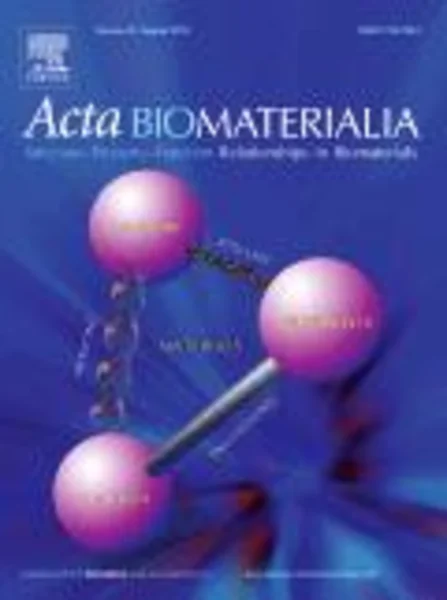-
effect of cleaning and sterilization on titanium implant surface properties and cellular response
جزئیات بیشتر مقاله- تاریخ ارائه: 1392/01/01
- تاریخ انتشار در تی پی بین: 1392/01/01
- تعداد بازدید: 854
- تعداد پرسش و پاسخ ها: 0
- شماره تماس دبیرخانه رویداد: -
titanium (ti) has been widely used as an implant material due to the excellent biocompatibility and corrosion resistance of its oxide surface. biomaterials must be sterile before implantation, but the effects of sterilization on their surface properties have been less well studied. the effects of cleaning and sterilization on surface characteristics were bio-determined using contaminated and pure ti substrata first manufactured to present two different surface structures: pretreated titanium (pt, ra = 0.4 μm) (i.e. surfaces that were not modified by sandblasting and/or acid etching); (sla, ra = 3.4 μm). previously cultured cells and associated extracellular matrix were removed from all bio-contaminated specimens by cleaning in a sonicator bath with a sequential acetone–isopropanol–ethanol–distilled water protocol. cleaned specimens were sterilized with autoclave, gamma irradiation, oxygen plasma, or ultraviolet light. x-ray photoelectron spectroscopy (xps), contact angle measurements, profilometry, and scanning electron microscopy were used to examine surface chemical components, hydrophilicity, roughness, and morphology, respectively. small organic molecules present on contaminated ti surfaces were removed with cleaning. xps analysis confirmed that surface chemistry was altered by both cleaning and sterilization. cleaning and sterilization affected hydrophobicity and roughness. these modified surface properties affected osteogenic differentiation of human mg63 osteoblast-like cells. specifically, autoclaved sla surfaces lost the characteristic increase in osteoblast differentiation seen on starting sla surfaces, which was correlated with altered surface wettability and roughness. these data indicated that recleaned and resterilized ti implant surfaces cannot be considered the same as the first surfaces in terms of surface properties and cell responses. therefore, the reuse of ti implants after resterilization may not result in the same tissue responses as found with never-before-implanted specimens.
مقالات جدیدترین رویدادها
-
استفاده از تحلیل اهمیت-عملکرد در ارائه الگوی مدیریت خلاقیت سازمانی و ارائه راهکار جهت بهبود
-
بررسی تاثیر ارزش وجوه نقد مازاد بر ساختار سرمایه شرکت های پذیرفته شده در بورس اوراق بهادار تهران
-
بررسی تأثیر سطح افشای ریسک بر قرارداد بدهی شرکت های پذیرفته شده در بورس اوراق بهادار تهران
-
بررسی تأثیر رتبه بندی اعتباری مبتنی بر مدل امتیاز بازار نوظهور بر نقد شوندگی سهام با تأکید بر خصوصی سازی شرکت ها
-
تأثیر آمیخته بازاریابی پوشاک ایرانی بر تصویر ذهنی مشتری پوشاک ایرانی (هاکوپیان)
-
بررسی الگوی تحمل ایسکمی در سنین مختلف قبل از بلوغ در قلب مجزا شده خرگوش
-
بررسی بیوکلیمای انسانی شهر اهواز با استفاده از شاخص ترجونگ
-
تاثیر مدیریت دانش بر چابکی سازمانی
-
ranking data with ordinal labels: optimality and pairwise aggregation
-
fluoride adsorption on carboxylated aerobic granules containing ce(iii)
مقالات جدیدترین ژورنال ها
-
مدیریت و بررسی افسردگی دانش آموزان دختر مقطع متوسطه دوم در دروان کرونا در شهرستان دزفول
-
مدیریت و بررسی خرد سیاسی در اندیشه ی فردوسی در ادب ایران
-
واکاوی و مدیریت توصیفی قلمدان(جاکلیدی)ضریح در موزه آستان قدس رضوی
-
بررسی تاثیر خلاقیت، دانش و انگیزه کارکنان بر پیشنهادات نوآورانه کارکنان ( مورد مطالعه: هتل های 3 و 4 ستاره استان کرمان)
-
بررسی تاثیر کیفیت سیستم های اطلاعاتی بر تصمیم گیری موفق در شرکتهای تولیدی استان اصفهان (مورد مطالعه: مدیران شرکتهای تولیدی استان اصفهان)
-
تأثیر ارز دیجیتال بر مقررات ارز (پول) سنتی
-
مدیریت راهبردی (استراتژی) تفسیر انواع، شرایط و نحوه اجرا
-
نقش سیاست های آموزش عالی در تحقق برنامه های توسعه پایدار
-
سیاست گذاری: مفاهیم، الگوها و فرایندها
-
ارائه چارچوبی برای مدیریت برون سپاری فرایندهای منابع انسانی: پژوهش فراترکیب




سوال خود را در مورد این مقاله مطرح نمایید :